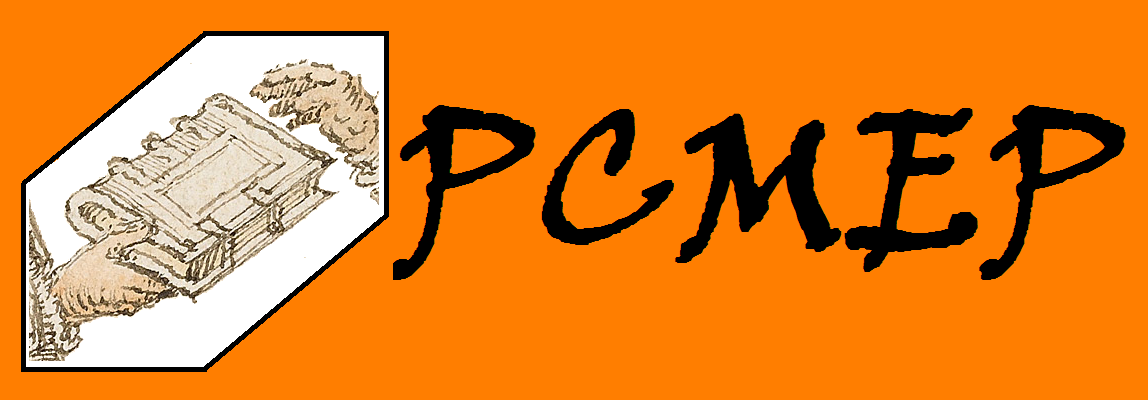The Parsed Corpus of
Middle English Poetry (PCMEP)
PCMEP Text Information
Adam Davy's Five Dreams
Back to PCMEP texts
About the text:
About the edition and manuscript base:
About the file:
Other:
| Text name: | Adam Davy's Five Dreams |
| Alternative names: | Adam Davy's Five Dreams about Edward II; To our Lord Jesu Christ in heaven |
| Content: | The poem narrates five dreams glorifiying Edward II, King of England (reigned 1307-1327). The author mentions himself in the poem as "Adam Davy, Marshal of Stratford-at-the-Bowe", which makes the poem one of the earliest whose author is known by name. The first dream ascribes to Edward II saint-like qualities, as he stoically suffers abuse by knights and rays of light shoot out of his ears. The second dream narrates Edward II's pilgrimage to Rome. The third dream prophesizes that he will become Emperor of all Christendom. The fourth dream assures Edward II of divine protection as Jesus unnails his hands from a Cross in a chapel and gets permission from his mother Mary to accompany Edward on a crusade. In the fifth dream, Edward appears before the high altar in Canterbury dressed in red. An angel urges Adam Davy to make his vision known to the king. |
| Genre/subjects: | Edward II, King of England, prophecies, politics, propaganda |
| Dialect of original composition: | Unknown It does not seem implausible that the South Eastern manuscript language and the dialect of the text's author, Adam Davy, should be comparable. He was a Marshall known in Stratford at Bow (lines 163-4). "Of Adam Davy, the author, little is certainly known beyond what he tells us in his verses" but since he wrote the poem "to obtain favor of the king," (Emerson 1905: 314), it is likely that he composed in the emerging London-based prestige variety of Middle English. |
| Date of original composition: | 1307-1327 Edward II, the subject of the poem, ruled England from 1307-1327. It is therefore likely that the date of composition falls somewhere within that period. "It has been urged that line 76 shows that the verses were written during the interregnum (1314-1316) after the death of Clement V" (Wells 1916: 221) The poem was written "c. 1310" (Sampson 1970: 42). Analyzing the weekdays of certain holidays referred to in the poem, Emerson (1926) finds that the text must have been composed 1307-1308. The online version of the Middle English Dictionary lists the date of composition as ?c1308. |
| Suggested date: | 1308 |
| PCMEP period: | 2b (1300-1350) |
| Versification: | couplets, aa |
| Index of ME Verse: | 3763 (IMEV), 3763 (NIMEV) |
| Digital Index of ME Verse: | 5993 |
| Wells: | 4.22 |
| MEC HyperBibliography: | Davy Dreams |
About the edition and manuscript base:
| Edition: | Furnivall, Frederick J. 1878. Adam Davy’s 5 Dreams about Edward II, etc. from Bodleian Laud Misc. 622. EETS o.s. 57, 59. London: Trübner & Co. 11-16. |
| Manuscript used for edition: | Oxford, Bodleian Library, Laud Misc. 622 (SC 1414), ff. 26vb-27va |
| Online manuscript description: | Summary catalogue of Western manuscripts in the Bodleian Library at Oxford, no. 1414 |
| Manuscript dialect: | (South) East-Midlands The manuscript language has been localized to Essex (McIntosh et al. 1986: 150). Phonological and other features indicate that the manuscript originates in the Southern East Midlands, perhaps London (Smithers 1957: 40-56, Sampson 1970: 42). |
| Manuscript date: | s. xiv-ex The online version of the MED dates the manuscript c1400. The manuscript was written "c. 1400" (Wells 1916: 221). The manuscript is "in one scribe's handwriting, somewhat before 1400, [...] 1380-1400" (Furnivall 1878: 7). |
About the file:
| File name: | M2b.DavyDreams |
| ID: | DavyDreams,x.y.z: x=page, y=line, z=token |
| Word count: | 1,155 |
| Token count: | 98 |
| Line count: | 166 |
Other:
| General notes: | The five dreams stretch from ll. 1-42, 43-66, 67-85, 86-134, 135-166 respectively and are introduced by large capital letters. The meter is quite inconsistent and it may therefore be unlikely that it forces particular word order patterns that would otherwise not be found ("The verses [...] have no poetical value" (Wells 1916: 221), "... it has not much literary importance" (Sampson 1970: 42)). The core of this text file was created by Christina Papapolyviou as a part of the required coursework for an introductory Middle English seminar at the University of Geneva during the fall semester 2013. Her help is hereby gratefully acknowledged. |
| Remarks on parses: | The line breaks follow the rhyming scheme in Furnivall’s (1878) edition. The parses are largely unproblematic. |
References
Emerson, Oliver F. 1926. 'The Date of Adam Davy’s "Dreams."' The Modern Language Review 21.2. 187-189. (available online)
Emerson, Olivier F. 1905. A Middle English Reader. London: Macmillan. (available online)
Furnivall, Frederick J. 1878. Adam Davy’s 5 Dreams about Edward II, etc. from Bodleian Laud Misc. 622. EETS o.s. 57, 59. London: Trübner & Co. (available online)
Sampson, George. 1970. The Concise Cambridge History of English Literature. Cambridge. Cambridge University Press.
Smithers, Geoffrey V. 1957. Kyng Alisaunder. Volume 2: Introduction, Commentary and Glossary. EETS o.s. 237. London: Oxford University Press.
Wells, John E. 1916. Manual of the Writings in Middle English, 1050-1400. New Haven, CT: Connecticut Academy of Arts and Sciences. (available online)
